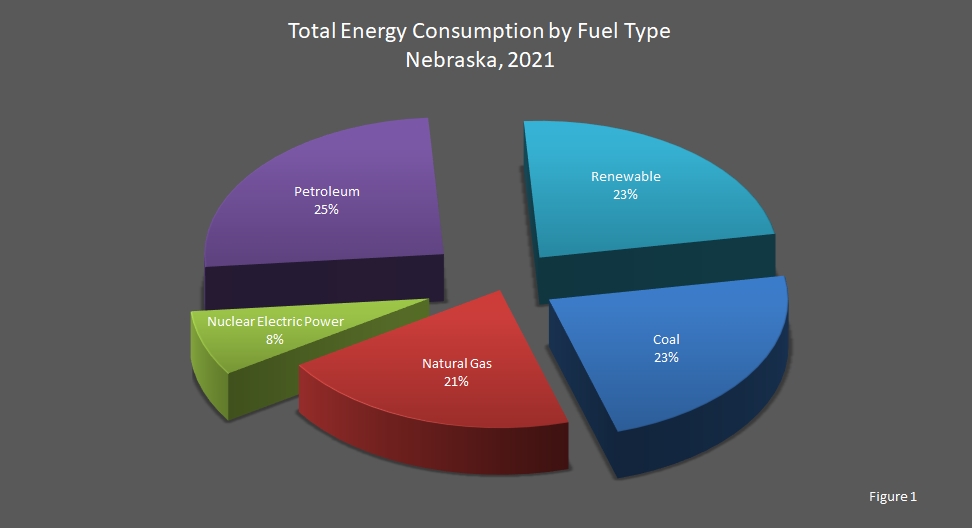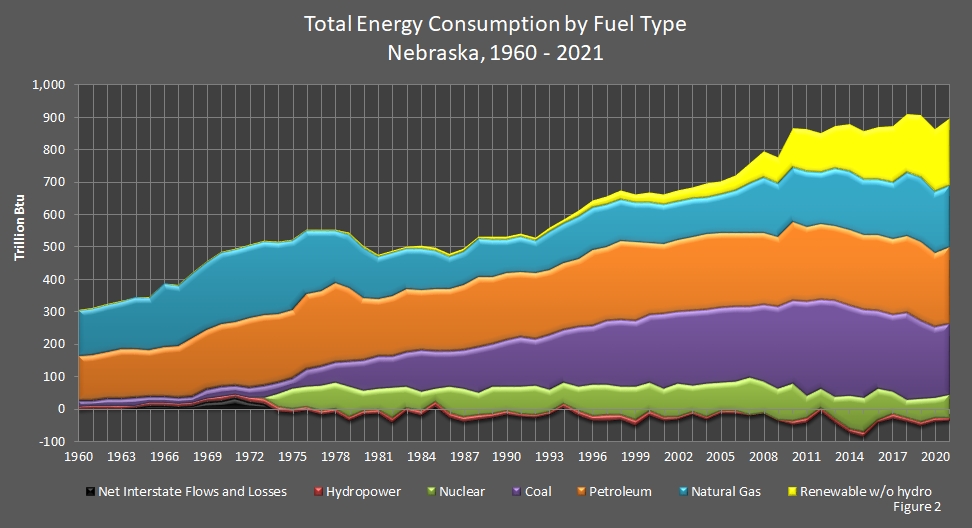Nebraska's total energy consumption in 2021 was 898 trillion British thermal units (Btu), which was a 4.0 percent increase from 2020. Total energy consumption is consumption of primary resources and end–use energy. According to the Energy Consumption Comparison by State report, Nebraska had the 19th lowest energy consumption in the country, which was less than one percent (0.9 percent) of the nation's total consumption. Using energy consumption per capita for comparison, Nebraska was the 9th highest in the country.
Primary resource consumption includes energy used in the generation of electricity whether that electricity is used in Nebraska or not. In 2021, consumption of primary energy resources was 934.12 trillion Btu, which was a 3.5–percent increase from 2020.
End–use energy consumption refers to the energy content of electricity and other fuels at the point of use by consumers. Unless otherwise noted, total energy consumption refers to total primary energy consumption adjusted for net interstate sales of electricity. Net interstate sales represent the difference between the energy in electricity sold, including the associated losses, and the energy input at electric utilities in Nebraska. Net interstate sales will be a negative number if Nebraska sold, or exported, electricity; and net interstate sales will be a positive number if Nebraska had to buy, or import, electricity. A percentage of the primary energy used to generate and distribute electricity is lost as waste heat. This loss is referred to as associated energy losses or electric system losses.
In 2021, Nebraska's energy needs were met by petroleum (25 percent), coal (23 percent), natural gas (21 percent), renewable energy (23 percent), and nuclear electric power (8 percent). See Figure 1 just below. In Figure 2 farther below, hydroelectric power is broken out of renewable energy. (To see a pie chart of electricity generation fuels, go to the Annual Electricity Generation by Fuel Type report.)
From 2020 to 2021, nuclear electric power use increased 11.2 percent, renewable energy use increased 7.2 percent, petroleum use increased 4.1 percent, and coal use increased 1.2 percent. Natural gas use decreased 0.9 percent.

